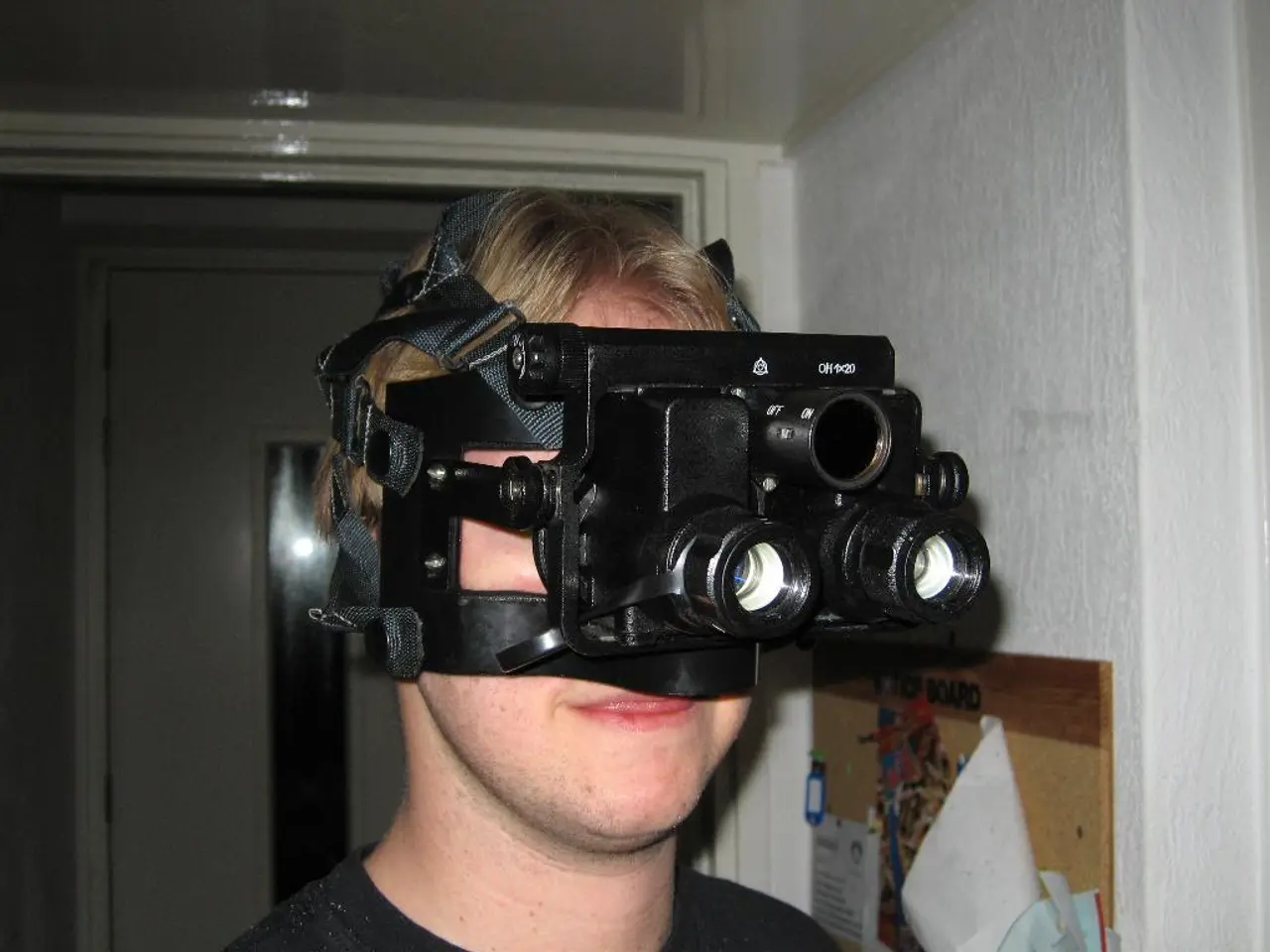Exploring Innovative Approaches in Virtual Reality App Creation
Virtual Reality (VR) technology continues to evolve, offering immersive experiences that simulate real-world scenarios or fantastical realms within a headset. In 2025, the latest advancements in VR app development encompass enhancements across major game engines like Unity and Unreal Engine, improvements in 3D modeling, motion tracking, gesture controls, audio and spatial sound design, as well as optimization strategies, alongside emerging future trends.
Unity Engine and Unreal Engine
Unity remains preferred for mobile AR/VR applications due to its extensive asset store, user-friendly interface, and broad community support. It is widely used for both prototyping and production of user-friendly immersive experiences [1][2]. Unreal Engine excels in producing photorealistic visuals and is favored for high-end VR gaming and applications that require top-tier graphics fidelity, such as the VR game Beat Saber [1]. Both engines continue to evolve with frequent updates optimizing VR UI design, interaction paradigms, and hardware integration. For example, Unity 2022.3.62f1 supports detailed UI best practices promoting user comfort and intuitive controls for headsets like Meta Quest 3S [2].
3D Modeling
3D modeling in VR app development benefits from increasingly sophisticated tools for asset creation, including higher fidelity mesh generation and realistic material shaders. Integration with multi-agent frameworks supports automation in generating and optimizing 3D environments and assets, improving development efficiency and content quality [4].
Motion Tracking and Gesture Controls
Advanced eye-tracking technology is incorporated in new VR headsets such as Meta Quest Pro, allowing for gaze-based interaction that enriches immersion and interaction precision [1]. Gesture recognition is significantly improving, supported by hardware and software innovations, making non-controller-based interaction more natural. VR UI implementations increasingly integrate controller ray-casting and joystick input combined with ergonomic interface placement to ensure comfort and usability [2].
Audio and Spatial Sound Design
VR systems like the Apple Vision Pro advance spatial audio functionalities delivering dynamic, head-movement adaptive soundscapes, which greatly enhance immersion [1]. The integration of haptic feedback together with spatial audio provides multi-sensory experiences, crucial for presence and realism in VR interactions [1][2].
Optimization Techniques
Optimization focuses on reducing latency, improving frame rates, and lowering hardware resource consumption, enabling wider accessibility on lower-powered standalone headsets [3]. The advent of 5G technology boosts cloud processing and streaming capabilities, supporting lightweight devices while delivering high-quality VR content by offloading complex computations to the cloud [3].
Future Trends
VR is becoming more immersive and user-friendly with continual hardware advances like wider FOV, sharper displays, and improved ergonomics, underpinning expanded use in health, education, architecture, and retail sectors [1][5]. WebAR and related web-based immersive tech are emerging, lowering entry barriers by enabling AR/VR experiences directly in browsers without app installations, broadening reach and accessibility [3]. Multi-agent AI frameworks are shaping automated content generation and user experience optimization, implying future VR environments will become more dynamic and personalized [4].
Increasing adoption of mixed reality (MR) and extended reality (XR) further blurs the boundaries between physical and digital worlds, augmented by more sophisticated interactive and sensory technologies [5]. As computational power advances and new algorithms are developed, VR experiences are expected to become even more seamless and indistinguishable from the real world.
[1] VRScout. (2025). The State of Virtual Reality (VR) Development in 2025. [online] Available at: https://vrscout.com/news/state-of-virtual-reality-vr-development-2025/
[2] Unity. (2022). Unity 2022.3.62f1 Release Notes. [online] Available at: https://docs.unity3d.com/Packages/com.unity.editor/latest/Release-Notes.html
[3] Gamasutra. (2025). The Future of VR Development: Optimization, WebAR, and AI. [online] Available at: https://www.gamasutra.com/blogs/Gamasutra/20250201/348479/The_Future_of_VR_Development_Optimization_WebAR_and_AI.php
[4] MIT Technology Review. (2025). How AI is Revolutionizing VR Content Creation. [online] Available at: https://www.technologyreview.com/2025/01/15/1182879/how-ai-is-revolutionizing-vr-content-creation/
[5] Road to VR. (2025). The Future of VR: Mixed Reality, WebAR, and AI-Driven Experiences. [online] Available at: https://www.roadtovr.com/the-future-of-vr-mixed-reality-webar-and-ai-driven-experiences/
- The latest advancements in VR app development for Unity and Unreal Engine have significantly improved user-friendly immersive experiences, with Unity favored for mobile AR/VR applications due to its extensive asset store and user-friendly interface, while Unreal Engine excels in photorealistic visuals for high-end VR gaming.
- 3D modeling in VR development benefits from tools for sophisticated asset creation, integrating multi-agent frameworks to generate and optimize 3D environments and assets, ensuring higher development efficiency and content quality.
- New VR headsets, such as Meta Quest Pro, incorporate advanced eye-tracking technology, enabling gaze-based interaction, and gesture recognition is significantly improving, making non-controller-based interactions more natural.
- VR systems like the Apple Vision Pro are advancing spatial audio functionalities, delivering dynamic, head-movement adaptive soundscapes, and integrating haptic feedback provides multi-sensory experiences, crucial for presence and realism in VR interactions.
- As the industry moves forward, VR is becoming more immersive and user-friendly with continual hardware advances like wider FOV, sharper displays, and improved ergonomics, underpinning expanded use in various sectors like health, education, architecture, and retail. Additionally, webAR and AI-driven experiences are emerging, lowering barriers to entry, and enabling AR/VR experiences directly in browsers without app installations.



